
Weather extremes: A superbly balanced item from RT on the unprecedented weather events this year.
RT.com
Thu, 25 Jul 2019 20:16 UTC
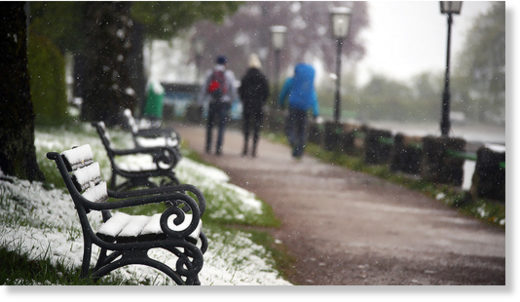
Snow fell across parts of Germany on May 5th 2019.As parts of Europe enter a second heatwave this summer and battle wildfires to the drumbeat of weather warnings and climate change alarm, other parts of the world look on in envy as they shiver in their summer shorts.
Belgium, Germany and the Netherlands have just beaten an all-time heat record. The UK is set to do the same. France did it last month, but could come close again this week. Portugal has just brought one wildfire under control, and warns of a “very high” risk of more, as are Spain and Italy.
But earlier in July, Germany and the Netherlands hit a record-low night-time temperature of under -1 C, and Switzerland was a few degrees colder than its summer averages.
All the while Moscow is getting soaked with rain in a July that’s set to become the coldest in over 40 years. We asked climate and weather experts what’s going on.
‘Global Warming’ or ‘Climate Change’?
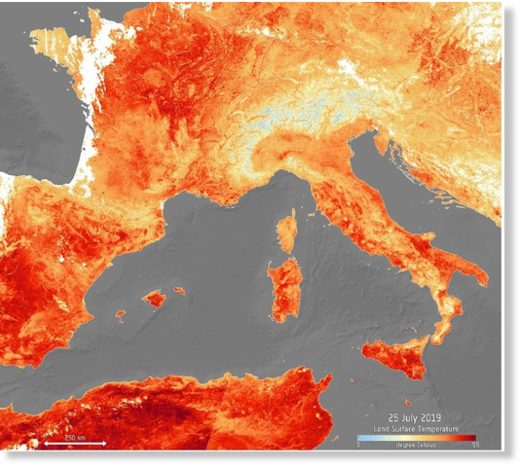
There’s no denying the planet, broadly speaking, is heating up. This year saw the warmest observed spring in the Northern hemisphere. June was the warmest on record worldwide. Some areas are becoming warmer at a faster rate than others – including those closer to the poles, says Dmitry Kiktyov, acting director of Rosgidromet, Russia’s state weather service.
Russia is also heating up faster than the global average in the last 40 years – 2.5 times faster, in fact. It has been gaining almost half-a-degree every decade since the late 1970s, according to Rosgidromet’s 2018 climate report.
Why, then, are Muscovites grudgingly shuffling around in their autumn coats in July – which is supposed to be the hottest month of the year in these parts?
July 2019 has been steadily proceeding at two degrees below average, and it’s going to be even worse next week, when an Arctic blast is predicted to take thermometers down to below 15 C.
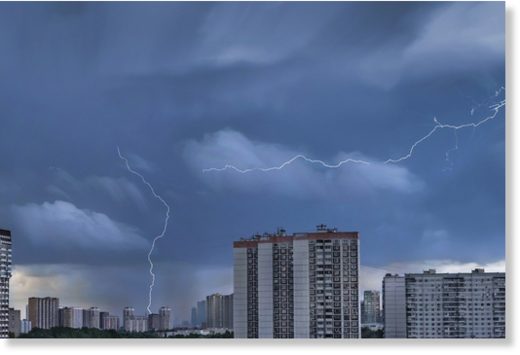
The number of observed weather extremes and anomalies increases, but it’s not necessarily a direct correlation with getting warmer.
“There is data over the past decades, which shows the number and strength of weather extremes is increasing in many areas of the globe… the climate, the weather is getting more twitchy – though not everywhere,” Kiktyov says.
“Observed” is the key word here, experts believe.
“Rains, downpours, storms – it was all there a hundred years ago, too. On the other hand, the latest statistics show that the number and frequency of dangerous phenomena has increased. Whether that’s because of climate change, or because there has been more monitoring, is not entirely clear,” says Anatoly Tsygankov, deputy head of Rosgidromet’s situation center. “Obviously, a hundred years ago, weather observation networks were very different from now. It was less dense, there were no satellites. Nowadays, the monitoring is more detailed.”
Man-made or Natural?
How much of this global warming is of our own doing is debatable.
“Nobody really knows the reason. There are two theories. The two foremost theories are the greenhouse effect and the shifting of the Earth’s axis relative to the Sun. Both are viable,” says Tsygankov.
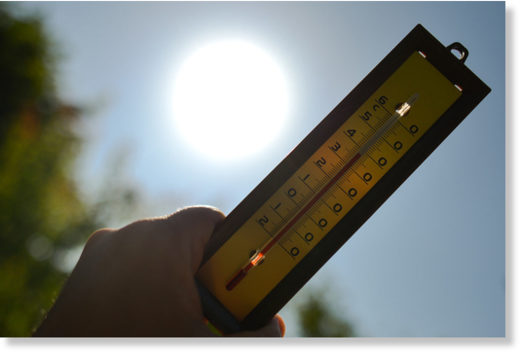
Earth goes through cycles, heating up and cooling down over centuries. Examples include the Medieval Warm Period followed by the Little Ice Age of the late Middle Ages. What we are going through now could, essentially, be another such swing, says Yevgeny Tishkovets, the chief specialist at the Phobos weather center.
“The main factor behind climate change on Earth is the changes in solar activity. As a rule, it happens every 200 years, give or take,“ says Tishkovets.
Despite all the apocalyptic worst-case scenarios flashing from news headlines, it’s nigh-impossible to accurately predict climate in the long term. Such projections are based on climate models, of which there are plenty, and advisory bodies get to pick and choose which one to use.

People lie in a park under 30+ degrees Celsius in London, July 25th 2019The human impact, in particular, has been exaggerated and vastly politicized, Tishkovets believes. He named the 2009 Climategate scandal as a case in point.
There have been scandals. Remember the leaked emails of British climatologists, when they manipulated climate data? A lot of people are simply fulfilling an order. ‘We need to overheat the topic, here’s the money, go.’
Manipulation is made easier by the sheer variety of climate projection models, and the end result is practically impossible to contest, he believes, because “how can you even verify a 50-year weather forecast?”
Is every summer going to be like this now?
Despite all the tools at our disposal, we can only really trust a forecast for the next week, a ten-day one at most, experts agree. Anything more far-reaching than that is subject to myriad mutable factors, which can undermine the most accurate-seeming prognosis on a whim.
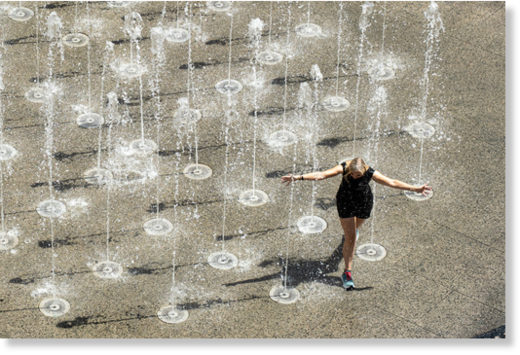
“It’s not all that straightforward; there’s no certainty the next year will be warmer than this one. There are peaks and valleys. There are so-called long-term modes of atmospheric variability, which are like swings that can last decades… they can partially offset each other, or they can add up – then we get an extreme winter or summer,“ Kiktyov says.
We all see the alarming graphs with the temperature curves crawling up degree by degree over the recent decades – but reliable weather and climate monitoring only goes back 140 years or so. A speck in time compared to planetary history – and in the end, we might end up having to just “crumple those graphs and throw them in the bin,“ says Tishkovets.

Martin comments:
Although Tsygankov mentions “two theories”, I believe that a third element, the weakening of the Earth’s magnetosphere, may be an important factor. Cosmic radiation entering the earth’s atmosphere has increased by 18% in the past four years as a result. That’s got to be a major concern, and yet it gets no publicity, with all the focus (distraction?) going on carbon (CO2) and AGW.
SPACE WEATHER BALLOON DATA: Approximately once a week, Spaceweather.com and the students of Earth to Sky Calculus fly space weather balloons to the stratosphere over California. These balloons are equipped with radiation sensors that detect cosmic rays, a surprisingly “down to Earth” form of space weather. Cosmic rays can seed clouds, trigger lightning, and penetrate commercial airplanes. Furthermore, there are studies ( #1, #2, #3, #4) linking cosmic rays with cardiac arrhythmias and sudden cardiac death in the general population. Our latest measurements show that cosmic rays are intensifying, with an increase of more than 18% since 2015:
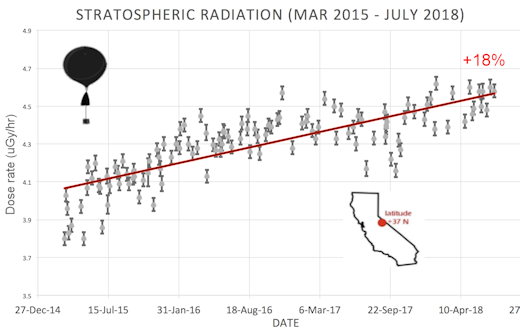
SEE ALSO:








